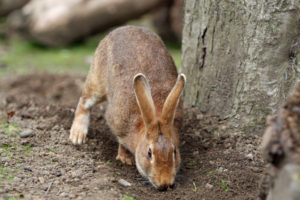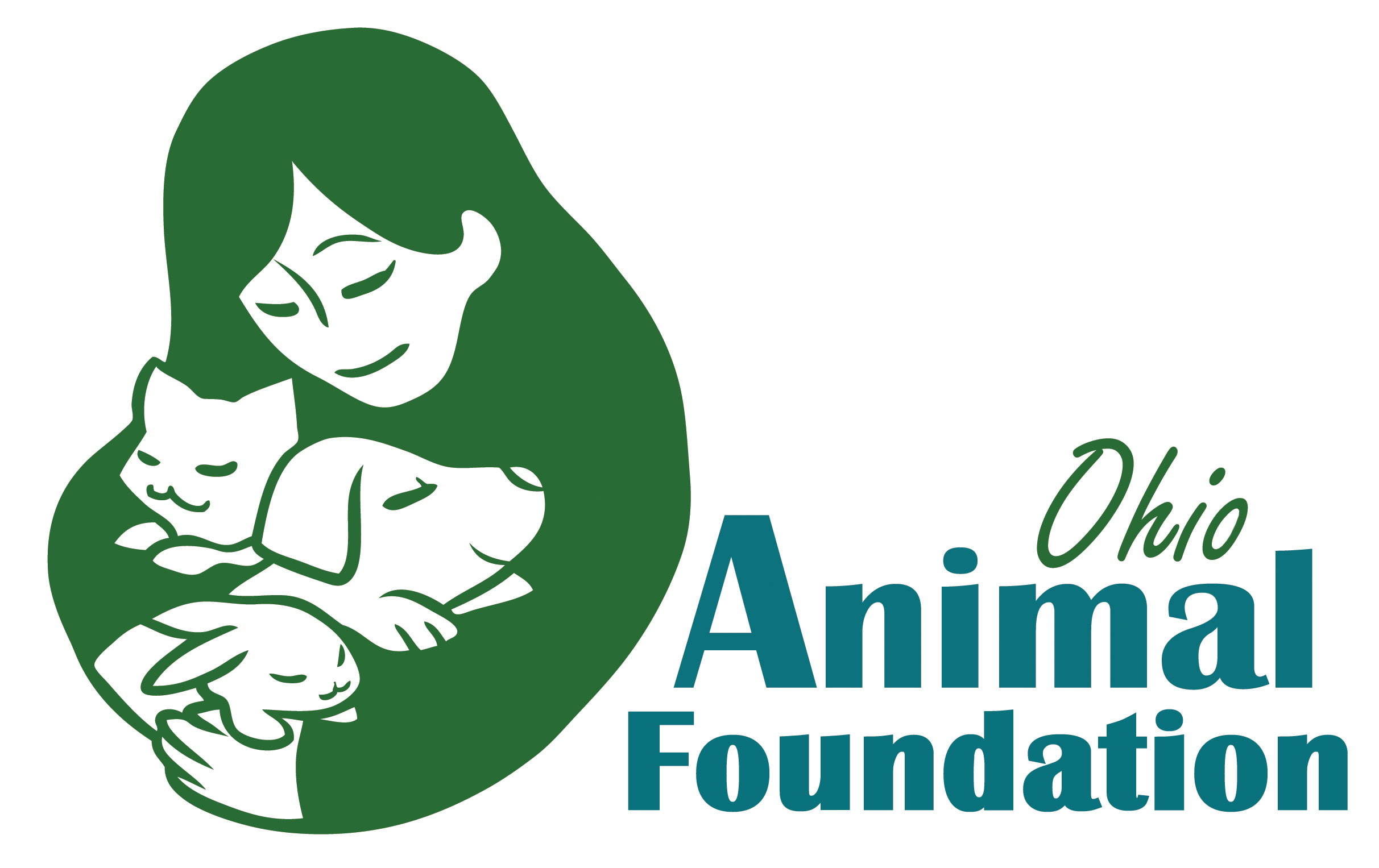Have you ever seen a fawn or rabbit in your backyard but not sure whether it’s orphaned or waiting for his mother? Maybe you’ve come across a bird appearing to struggle to fly on a nature walk and not sure whether to lend a hand or not.
In many cases, nature herself has the answer, but many times for those who love animals and want to see them flourish, it can be difficult to not intervene when we are unsure of what we are seeing.
Fortunately, Jess Armstrong, Customer Service & SCRAM! Wildlife Control Manager of the Ohio Wildlife Center has several helpful suggestions to help distinguish when to call for help, and when to let the animals’ family be the ones to intervene.
Since rabbits, deer and birds are common animals residents of Ohio may commonly see in a delicate situation, Jess explained what to do in situations pertaining to these particular animals.
“With all wildlife, it is important to know when the animal needs our help and when it doesn’t. We see a lot of animals, especially young animals, that are “kidnapped” by humans because they assume the animal is in need of help. With rabbits, birds, and deer, it’s important to monitor to see if a parent is visiting before interfering. With that being said, all species have some nuances, though,” she said.
For example, rabbits and white tailed deer are examples of times when you might see baby bunnies or fawns without their mothers, but these animals’ mothers use a similar method of protection where they do not visit their nest or young throughout the day. This is so the babies can avoid detection by predators.
“With rabbits, mom will only visit between dusk and dawn or when the yard is not in use,” she said.
 Jess explains that mother rabbits will leave the nest unattended but camouflaged in grass to hide the nest. Mom will feed while hiding from predators, so she does not alert predators to her babies’ location. You may never actually see the mom visit her nest, but that does not mean they are abandoned. So how can you tell if the nest truly is abandoned?
Jess explains that mother rabbits will leave the nest unattended but camouflaged in grass to hide the nest. Mom will feed while hiding from predators, so she does not alert predators to her babies’ location. You may never actually see the mom visit her nest, but that does not mean they are abandoned. So how can you tell if the nest truly is abandoned?
“You can check for abandonment by drawing a circle around it with flour (prints appear in the flour, the mother is tending to the young) or utilizing a mobile security camera overnight to see if mom is visiting. If no sign of mom is seen within 12 hours, the rabbits should be contained and brought to a wildlife rehabber,” she said.
If you see a nest, Jess advises, leave it where it is and protect it from kids and pets. She said one way this can be done is by putting a laundry basket upside-down over the nest, either staked to the ground or with a heavy object over it. Remove the protection just before sundown, and bring your dog or cat inside. Replace it every morning. If removing and replacing the protection not possible, cut a softball-sized hole in a laundry basket and leaving it in place. This will keep out most dogs (though probably not cats) and allows the mother rabbit to reach her babies. The longest anyone needs to protect a nest is three weeks, Jess said, adding that if the babies in the nest already have their eyes open, they are at least a week old.
When it comes to fawns, they can often be seen in the same spot for several days until his or her mom takes them to a new location. If they are laying down, curled up, they don’t necessarily need help, Jess noted.
“Leave it alone, and keep an eye on it,” she said.
“If you see it crying and approaching people, covered in flies or with a build up of feces on its rear end, or it is located directly next to a deceased adult, then we would assume it is orphaned.”
Ohio is not licensed to rehabilitate deer, so a rehabber can only take care of the deer for 72 hours. They spend this time “wild fostering” the deer with a local lactating herd, which Jess explains can be difficult, so presenters should observe the deer’s behavior for at least three hours before taking it from the wild.
“In general, any animal that is actively bleeding or has exposed bone, is dragging limbs or wings, is inactive or non-reactive to human approach (although this may be normal for young animals), or does not seem to be moving with a purpose (aimlessly walking in circles, seeming oblivious to noises and movements around them) is likely in need of human assistance,” she said.
Jess compared baby birds learning to fly to humans when they are learning to ride a bike, in that it takes a lot of practice.
 Seeing a baby bird on the ground does not always mean they need assistance. These young birds, called “fledglings,” should be left alone.
Seeing a baby bird on the ground does not always mean they need assistance. These young birds, called “fledglings,” should be left alone.
“Fledglings look like awkward teenagers and are basically birds that are learning to fly and gaining strength in their flight muscles as the parents continue to feed,” she said.
However there are some that fall out of the nest before they are fledglings and can benefit from human assistance. Putting a bird in back in its nest is acceptable if the bird is a hatchling (which has no feathers) or a nestling (which is just starting to get feathers) and is not injured. Jess explains if there is no nest, or it’s damaged, make an artificial nest using a well-draining container, such as a margarine tub with holes, line it with grass, and place it near the original nest.
If the bird is a fledgling, she advises to place it on a nearby branch or shrub, but if you are not sure of the age, put it in the nest.
“If it hops back out, it’s probably a fledgling,” Jess said.
She recommends monitoring the bird from a distance for 30-60 minutes to see if an adult comes to feed. If the adult has not returned, it is likely an orphan and should be sent to a licensed wildlife rehabber.
Contrary to popular belief: “Human scent will not cause the parent birds to abandon their young (most songbirds have a poorly developed sense of smell),” she said.
If you need wildlife assistance, the Ohio Wildlife Center offers the public a way to get help. Their website has a “found an animal” tool that can provide assistance to common wildlife issues in a few minutes. There is an info line messaging service, 614-793-9453, monitored by volunteers, as well as the Ohio Wildlife Center Community Rescue and Response team page on Facebook (also monitored by volunteers). Those needing assistance can leave messages and someone will get back with those needing assistance as soon as possible.
Finally, she recommends Animal Help Now, which is a great tool to get in touch with local, licensed rehabbers. Type in your address and hit “wildlife emergency” to get a list of rehabbers listed out, closest to furthest. (Make sure to read the fine print under each to check which species they are able to assist with.)
As the SCRAM! Wildlife Control Manager for the Ohio Wildlife Center, Jess explains that SCRAM! Is a fee-for-service of the OWC. It serves to assist homeowners with nuisance wildlife issues through non-lethal means, such as using one-way doors and preventing access into and under structures.
She has been with the organization for two years, but says she always had a passion for native wildlife and observing nature.
“We will always be living with and impacting wildlife, especially as we continue to expand and take over natural areas. We always have the choice to peacefully coexist and consciously make decisions with wildlife in mind,” she said. “Animals are just trying to exist in the environment we have created for them in our urban and suburban areas, so empathizing with them is all we ask. A lot of wildlife are in need of human-intervention and rescue because of human interactions.
Special thank you to Ohio Animal Foundation writer Liz Hosfeld for her work on this article, and to Jess Armstrong from Ohio Wildlife Center!
